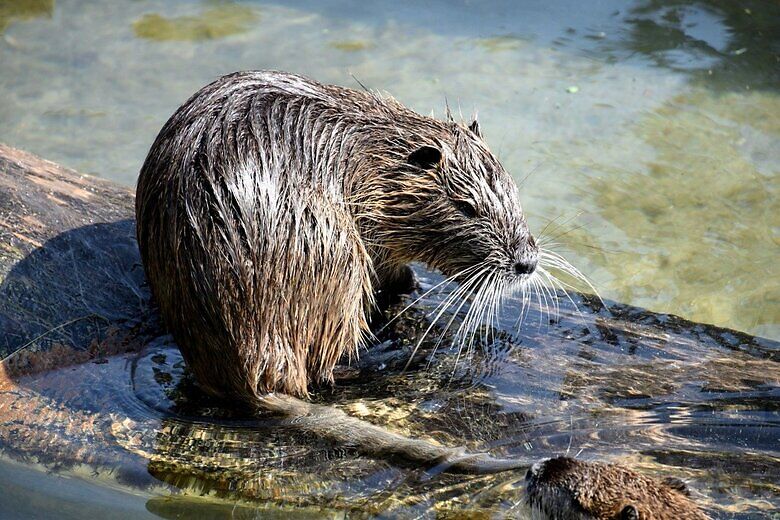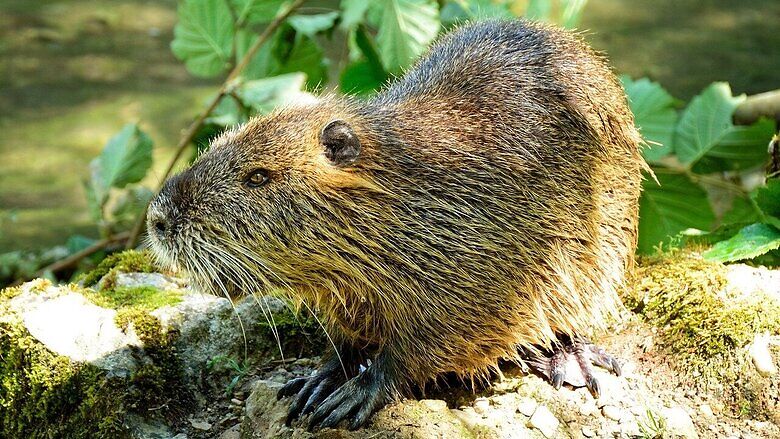About Nuisance Beavers
Beavers are the largest rodent in North America. Their conflict with humans has been on the rise in recent years and most landowners do not want them around because of the damage they cause to structures and the environment. Beavers’ dam-building ability makes the environment prone to flooding and their tree cutting activity is a threat to agriculture, aesthetics, and health.

Biology
A famous animal behaviorist once said that beavers remind man that animals are excellent thinkers, with skills and adaptations that make them survive in the wild. These critters are great engineers that use wood and plants to channel river courses and create dams for survival.
Living Area
Beavers are semi-aquatic animals that live in burrows they make in soft marshes and near water bodies with enough space for their families to thrive. They do not just make one burrow but many, which are linked by tunnels and are quick to disperse and escape into new burrows when predators enter into the old ones.
Habits
Beavers are nocturnal creatures, so they sleep and are inactive at night and only come alive at night when they hunt for food and build their burrows. They are very territorial animals and mark their space with a pungent smelling urine that gives off a castor oil scent.
Diet
Beavers feed on the bark of deciduous trees, which is very convenient because what they do not consume, they use for dam and burrow building. They have sharp orange teeth and have been known to fell very large trees. This makes them menaces to the environment because their presence can increase the rate of deforestation.
Mating
Beavers mate for life and are very devoted parents to their young ones. Beavers tend to self-regulate their population, so in a decreasing population size, they have a large litter size and vice versa.
Problems They Cause
Beavers are highly intelligent and great engineers, but their actions cause a lot of problems to livestock, water animals, humans, and the environment. The problems beavers cause fall into two major categories, which are tree felling and building of dams. Such problems include:
- Flooding: This becomes a problem after serious rain or snow when water bodies are significantly blocked by the dams created by these critters and there is an overflow of water over banks leading to flooding and destruction of property, crops, and the topsoil is washed away in the process.
- Blocking of migratory fish: The demarcations and tunnels created by beavers sometimes hinder the movement of aquatic animals, especially migratory fish that travel to mate. This reduces reproduction in those animals and may be a problem when those aquatic animals cannot move around to feed.
- Tree felling: Their sharp teeth allow beavers to cut through trees in a few minutes, and because of their large body sizes, beavers can eat many deciduous tree barks and can be agents for deforestation, especially if the beavers densely populate an area. They can infest a cotton plantation and eat through the cotton trees causing damage to the farmer. With beavers around, deciduous trees are always in danger because they eat through the roots and cause the trees to die.
- If you keep fish ponds in areas that are infested by beavers, your fish are not safe, because beavers can swim and will likely eat your fish.

Prevention Methods
Most landowners do not want beavers around their property and would do anything to prevent them from getting in. Some methods these landowners have employed effectively include:
- Fencing: To protect the trees in your yard, you can wrap them with wire mesh or hardware cloth that allows them to grow and protects them from consumption by beavers. These fences can last for many years, which in the end saves you money. Beavers also prefer swimming and moving through burrows than climbing, so you can make fences that are deep into the ground and a bit high to discourage the beavers from entering into your yard.
- Removal of favorite foods: Beavers will consume a variety of deciduous tree barks, but their favorites are birch, willow, poplar, and alder wood. Your best bet is to remove these from your property and allow beavers to look for food somewhere else. You should also consider planting balsam and spruce to make your yard even less attractive to beavers.
- Destroying dams: For young beavers who have not yet established their territory, repeatedly destroying the dams that they build will discourage them and make them leave that place and look for a new and more favorable place to live and build a family.
- Undermining constructed dams: If the beavers have established dams in a water body, you can lower the water level and keep it low to discourage the beavers and cause these critters to find a new home.
Professional Removal Tactics
In cases of beaver infestations, the best way to remove them from your yard is to use traps. The traps need special training to use and so do transporting and relocating the animal.
You can contact your local fish and wildlife authority to know the laws guiding trapping and relocation in your locality so that you will not run into trouble when trying to get rid of the beavers. You should also make sure that you report the case of beaver infestation to wildlife control because they have the best skills to handle the removal of these critters professionally.
The only humane and harmless way to remove beavers is to use traps, but this requires patience and expertise because beavers are trap-shy and nocturnal animals. You must bait them with their favorite foods and disguise the trap properly to be able to catch them.
For information on getting rid of beavers, see Getting Rid of Beavers.
